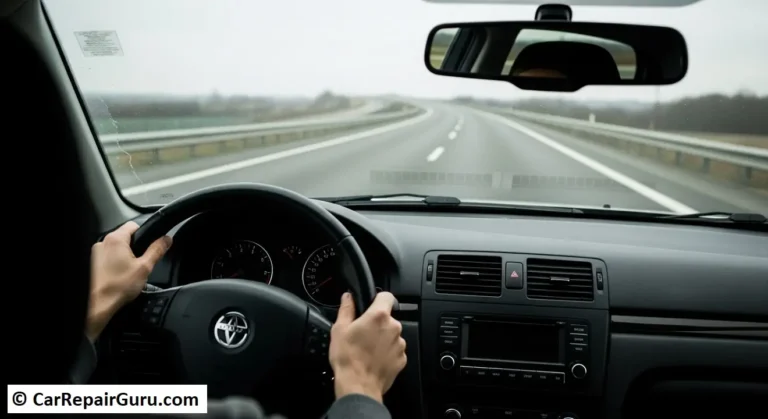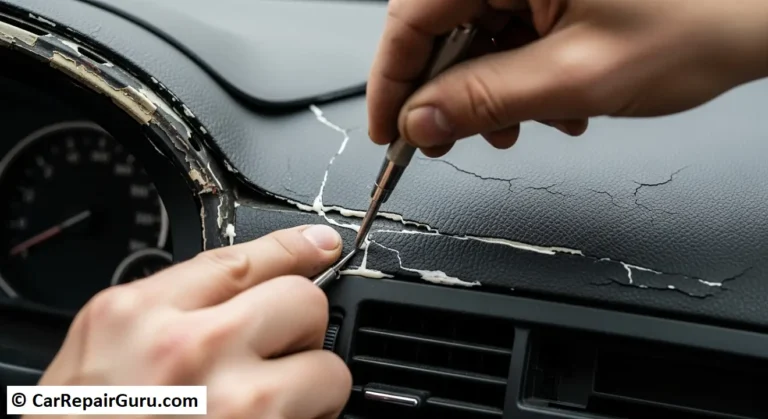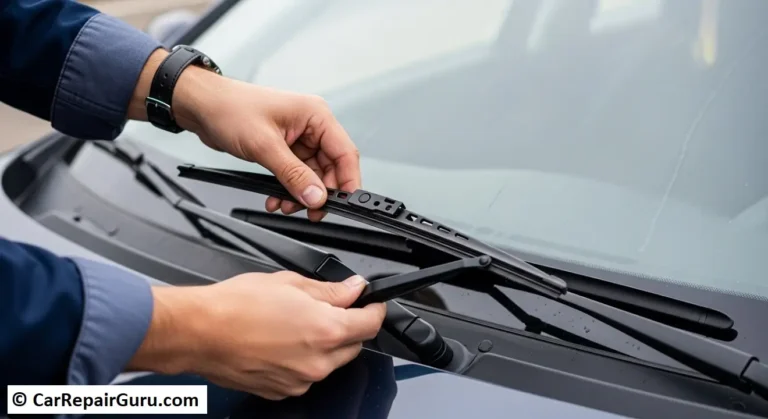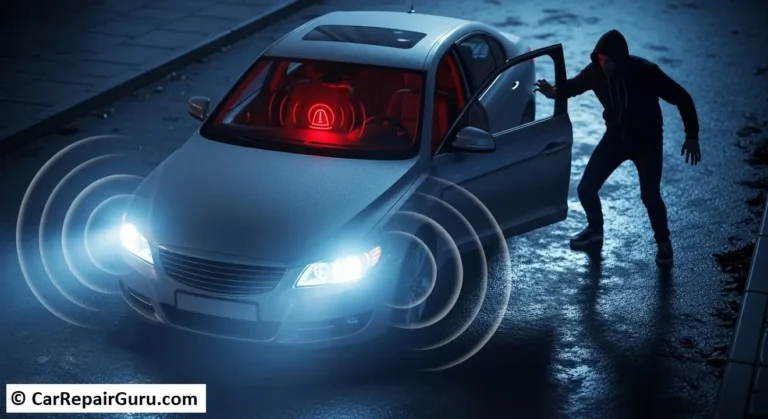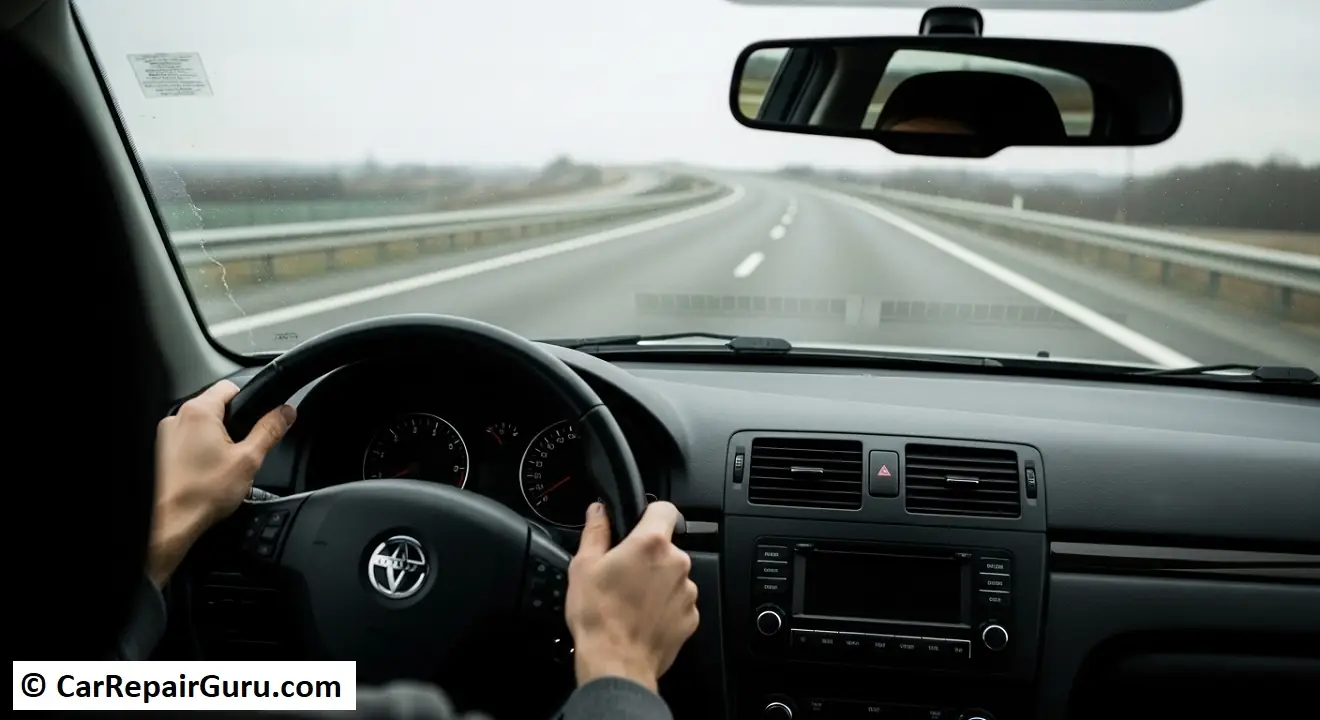
Ever turned into a corner and felt… a disconnect? That slight delay, the unnerving body roll, the feeling that the car is vaguely suggesting a direction rather than confidently carving a line. Whether you’re driving a daily commuter or a weekend sports car, that “floaty” sensation is a sign that your vehicle’s handling isn’t living up to its potential.
The secret to a sharp, responsive, and confidence-inspiring driving experience isn’t always about bolting on expensive new parts. It’s about understanding and optimizing what you already have.
We’re going to demystify the world of suspension adjustments, breaking down the core principles of suspension tuning in a way that anyone can understand. By the end of this article, you’ll have a clear roadmap to transform your car from a sloppy appliance into a precise driving tool.
Before You Adjust – Key Handling Concepts You Need to Know
Before we start turning wrenches, it’s crucial to speak the language of handling. Understanding these fundamental concepts will help you diagnose your car’s behavior and make intelligent adjustments.
Understeer (or “Push”)
This is what happens when you turn the steering wheel, but the car wants to keep going straight. The front tires have lost grip before the rear ones. The sensation is one of the front end “pushing” wide in a corner. Think of trying to turn a heavily loaded shopping cart too quickly—it just plows forward.
Oversteer (or “Loose”)
This is the opposite and often more dramatic scenario. The rear tires lose grip before the front, causing the back end of the car to slide or swing out. In small, controlled doses, it can help the car rotate through a corner. In large, unexpected doses, it can lead to a spin. Imagine the back end of a pickup truck sliding on a wet road.
Body Roll
This is the physical leaning of the car’s chassis toward the outside of a turn. A little bit of body roll is natural and helps you feel what the car is doing, but excessive roll can feel sloppy and upsets the balance of the vehicle by transferring too much weight too quickly.
Grip vs. Handling
These terms are related but distinct. Grip is the raw adhesion your tires have with the road surface. Handling is about the car’s behavior—its balance, predictability, and responsiveness to your inputs. Great handling inspires confidence because you know exactly how the car will react.
Our goal is to use suspension adjustments to create a car with predictable, confidence-inspiring handling that makes the most of the available grip.
The “Big Four” of Suspension Tuning – Your Roadmap to Better Handling
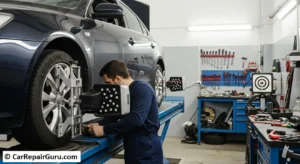
These four areas are the foundation of any good car suspension setup. Getting them right will provide the most significant gains in performance and driver feel.
1. Alignment – The Foundation of Good Handling
Your car’s alignment is the single most important factor in its handling characteristics. A proper performance alignment is the best bang-for-your-buck modification you can make. It consists of three key angles:
Camber – The Key to Cornering Grip
- What is it? Camber is the vertical tilt of your wheels when viewed from the front of the car.
- Negative Camber: The top of the wheel tilts inward, toward the car’s center.
- Positive Camber: The top of the wheel tilts outward.
- How It Affects Handling: As your car corners, body roll causes the chassis to lean. This leaning action lifts the inside edge of the outside tire off the pavement, reducing its contact patch and grip. By dialing in some negative camber, you pre-tilt the wheel so that it sits flat on the road during hard cornering, maximizing grip exactly when you need it most.
- Adjustment Tips:
- Street: A mild -0.5 to -1.5 degrees of negative camber is a fantastic starting point. It will noticeably improve turn-in and cornering stability without causing excessive inner tire wear.
- Track: Dedicated track cars often run -2.5 degrees or more to maximize cornering grip, at the expense of accelerated tire wear and reduced straight-line braking performance.
Caster – The Secret to Stability
- What is it? Caster is the forward or backward tilt of the steering axis when viewed from the side of the car.
- How It Affects Handling: Positive caster (when the axis is tilted backward) is like the front wheel of a shopping cart—it wants to self-center and track straight. Increasing positive caster provides better straight-line stability, especially at high speeds, and improves steering “feel” and feedback. It also has a neat side effect of creating beneficial negative camber as you turn the steering wheel.
- Adjustment Tips: In most performance applications, you want as much positive caster as your car’s suspension and alignment specs will safely allow. It offers significant stability benefits with virtually no downsides.
Toe – Dialing In Responsiveness
- What is it? Toe is the direction your wheels are pointing relative to each other, as viewed from above.
- Toe-in: The front of the wheels point slightly inward, like being pigeon-toed.
- Toe-out: The front of the wheels point slightly outward, like being duck-footed.
- How It Affects Handling: Toe has a massive impact on steering response and stability.
- Toe-in (on the front or rear) promotes straight-line stability, as the wheels are constantly trying to pull toward the center.
- Toe-out (on the front) makes the car much quicker to respond to steering inputs. The inside wheel starts turning into the corner instantly, making the car feel darty and agile.
- Adjustment Tips:
- Street: A very slight amount of toe-in (e.g., 1/16th of an inch total) at the front and rear is a safe, stable setup for most cars.
- Track/Autocross: A tiny bit of front toe-out can dramatically sharpen turn-in, but too much will make the car unstable and “tramline” (follow ruts in the road) during daily driving.
2. Ride Height – More Than Just Looks
Lowering a car is one of the most popular car handling mods, but it’s about more than aesthetics.
How It Affects Handling: Lowering your car reduces its center of gravity. A lower center of gravity means less weight transfer during cornering, braking, and acceleration. This directly translates to less body roll and a more stable, planted feel.
Adjustment Tips: The key is moderation. “Slamming” a car too low can ruin the suspension geometry, limit suspension travel (causing it to hit the bump stops), and result in a harsh, skittish ride. For most street cars, a well-engineered set of lowering springs or adjustable coilovers that provide a 1-1.5 inch drop is the sweet spot for a tangible handling improvement without major compromises.
3. Dampers (Shocks & Struts) – Controlling Movement
Your dampers (shocks or struts) are the brains of the suspension’s movement. Their job is to control the speed at which your springs compress and rebound, keeping the tire pressed firmly against the road. If you have adjustable dampers, you have a powerful tuning tool.
- How It Affects Handling:
- Compression: This setting controls how the suspension absorbs a bump.
- Rebound: This setting controls how the suspension settles after the bump, preventing it from oscillating or bouncing.
- Adjustment Tips: Stiffer is not always better! Overly stiff dampers won’t allow the suspension to absorb imperfections, causing the tire to skip over the surface and lose grip. Start with the manufacturer’s recommended baseline setting. For a bumpy road, you may need to soften the settings. For a smooth track, you can stiffen them to control body movements more precisely.
4. Sway Bars (Anti-Roll Bars) – Fine-Tuning the Balance
Sway bars are the primary tool for adjusting your car’s understeer/oversteer balance. It’s a torsion bar that connects the left and right sides of the suspension, working to resist body roll.
- How It Affects Handling: By changing the stiffness of the front or rear sway bar, you are changing the roll stiffness of that end of the car. This alters how much load is transferred to the outside tire during cornering, directly affecting its grip limit.
- Adjustment Tips (The Golden Rule):
- To Reduce Understeer (make the car turn more): Stiffen the rear sway bar OR soften the front sway bar.
- To Reduce Oversteer (make the car more stable): Stiffen the front sway bar OR soften the rear sway bar.
- Many aftermarket sway bars are adjustable, allowing you to easily fine-tune the car’s balance for your driving style.
Your Game Plan for Suspension Tuning
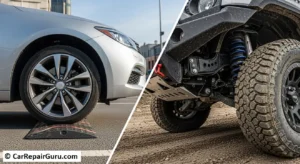
Feeling overwhelmed? Don’t be. Here’s a simple, step-by-step process to improve vehicle handling without getting lost.
1. Define Your Goal: What are you building? A comfortable but capable daily driver? A weekend canyon carver? A dedicated track machine? Your goal dictates your ideal settings.
2. Start with the Best Tires & a Professional Alignment: Your tires are your only connection to the road. Before you touch anything else, make sure you have good quality tires with adequate tread. Then, take your car to a reputable shop that specializes in performance alignments and give them your goals. This is the single most effective step you can take.
3. Make One Change at a Time: This is critical. Don’t adjust your dampers, sway bar, and tire pressures all at once. Change one single thing (e.g., stiffen the rear sway bar one hole), then go drive the car on a familiar, safe road or track.
4. Test, Document, and Repeat: Pay attention to how the change affected the car’s behavior. Did it fix your understeer? Did it make the car too twitchy? Keep a small notebook. Write down the setting, the date, and your impressions. This logbook will become your most valuable tuning tool.
DIY or Pro Tune? Making the Right Choice
Perfect for DIY: Adjusting damper settings (the clicker knobs on top of your coilovers) and changing the stiffness setting on an adjustable sway bar are easy tasks you can do in your driveway.
Leave it to the Pros: Wheel alignment requires a precision laser alignment rack. There is no substitute. Getting a professional suspension setup, especially complex tasks like corner balancing a car with coilovers, is an investment that pays huge dividends in performance and safety.
From Sloppy to Stable – Your Journey to Confident Handling
Improving your vehicle’s handling is a rewarding journey that connects you more deeply with your car. It’s not about chasing raw numbers; it’s about creating a machine that is predictable, stable, and ultimately, more fun to drive. By focusing on the core principles of alignment, controlling body motion with dampers and sway bars, and making small, deliberate changes, you can unlock a level of performance you never thought possible. A well-tuned car communicates with you, inspires confidence, and turns every corner into an opportunity.
Now, we want to hear from you. What’s the first suspension adjustment you plan to make? Share your car and your handling goals in the comments below!
Suspension Adjustment FAQs
Will lowering my car automatically improve handling?
Not necessarily. A modest drop from quality components lowers the center of gravity, which is beneficial. However, lowering a car too much can wreck the suspension’s geometry, causing worse handling than stock. It’s all about finding the right balance.
What’s the best first suspension mod for better handling?
Always start with tires. After that, a set of high-quality, adjustable sway bars and a performance alignment will provide the most noticeable and cost-effective improvement in handling.
How do coilovers improve handling?
Coilovers are a complete shock and spring package that offers a huge range of adjustability. They allow you to precisely set your ride height, spring preload, and damping (compression and rebound). This gives you the control to fine-tune your suspension setup for your exact needs, something stock suspension can’t do.
How often should I get a performance alignment?
You should get an alignment at least once a year, or any time you change a major suspension component (like springs, coilovers, or control arms). It’s also a good idea after hitting a significant pothole or curb.



